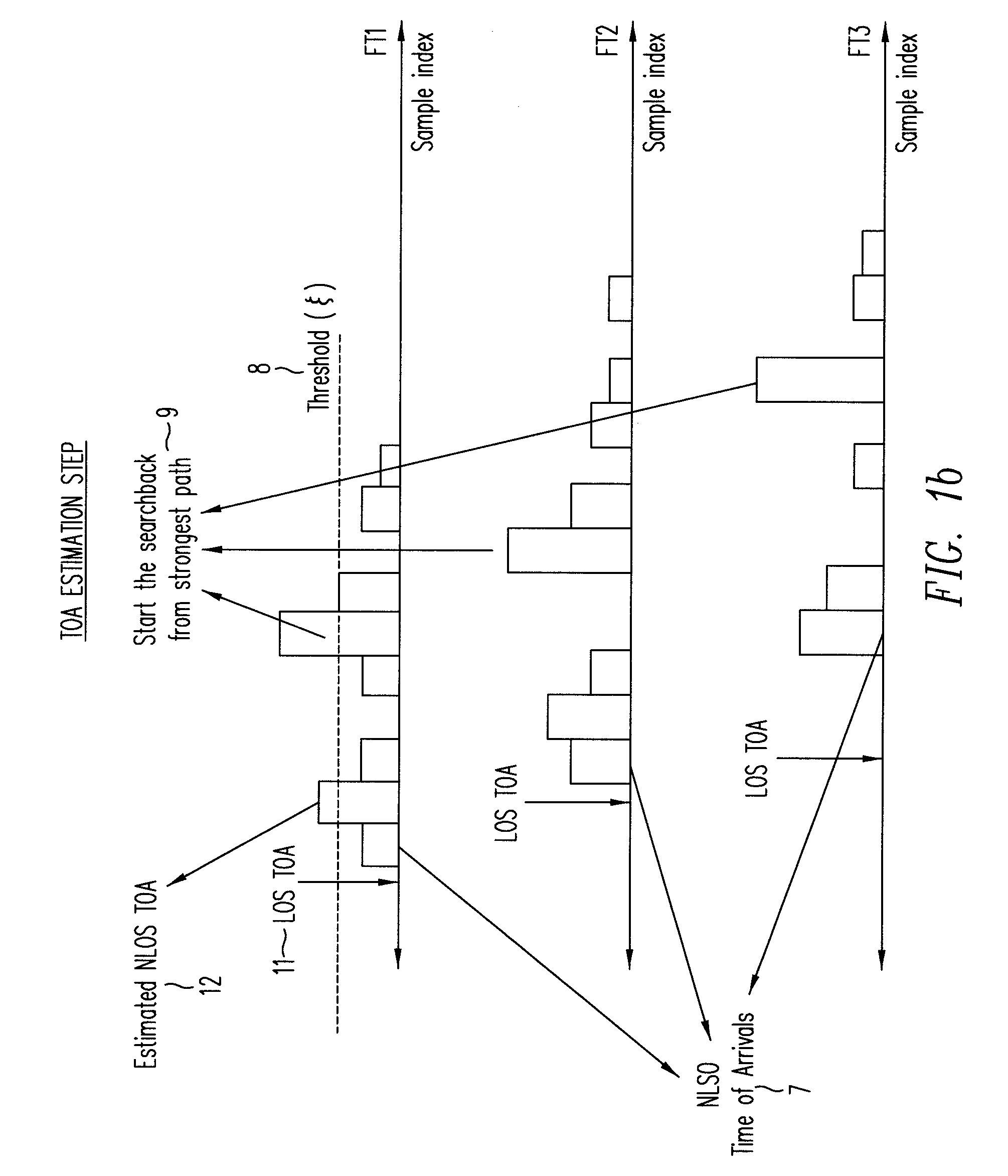Line-of-sight (LOS) or non-LOS (NLOS) identification method using multipath channel statistics
a multi-path channel and statistics technology, applied in the field of wireless localization and communications technology, can solve the problems of nlos toa estimates adversely affecting localization accuracy, taking advantage of information in received signals,
- Summary
- Abstract
- Description
- Claims
- Application Information
AI Technical Summary
Benefits of technology
Problems solved by technology
Method used
Image
Examples
Embodiment Construction
[0022]According to one embodiment of the present invention, a channel impulse response (CIR) h(t) of a received signal may be represented by:
[0023]h(t)=∑l=1Lγlδ(t-τl)
where L is the total number of MPCs, and γl and τl are the amplitude and delay of the lth MPC, respectively. The TOA of the received signal is given by τtoa=τ1 (i.e., the arrival time for first arriving path). Hypotheses H0 and H1, representing respectively the LOS hypothesis and the NLOS hypothesis, are given by:
[0024]{H0:d / c=τ1,H1:d / cτ1,
Where d denotes the actual distance between a fixed terminal (FT)1 and a mobile terminal, and c denotes the speed of light. Under a NLOS condition, even when the first arriving path is correctly identified, the TOA estimate still yields a larger value as compared to the actual distance. Thus, NLOS FTs are identified and their effects are mitigated to avoid degradation of localization performance. 1 A fixed terminal is a terminal which is non-moving relative to a mobile terminal....
PUM
 Login to View More
Login to View More Abstract
Description
Claims
Application Information
 Login to View More
Login to View More - R&D
- Intellectual Property
- Life Sciences
- Materials
- Tech Scout
- Unparalleled Data Quality
- Higher Quality Content
- 60% Fewer Hallucinations
Browse by: Latest US Patents, China's latest patents, Technical Efficacy Thesaurus, Application Domain, Technology Topic, Popular Technical Reports.
© 2025 PatSnap. All rights reserved.Legal|Privacy policy|Modern Slavery Act Transparency Statement|Sitemap|About US| Contact US: help@patsnap.com



